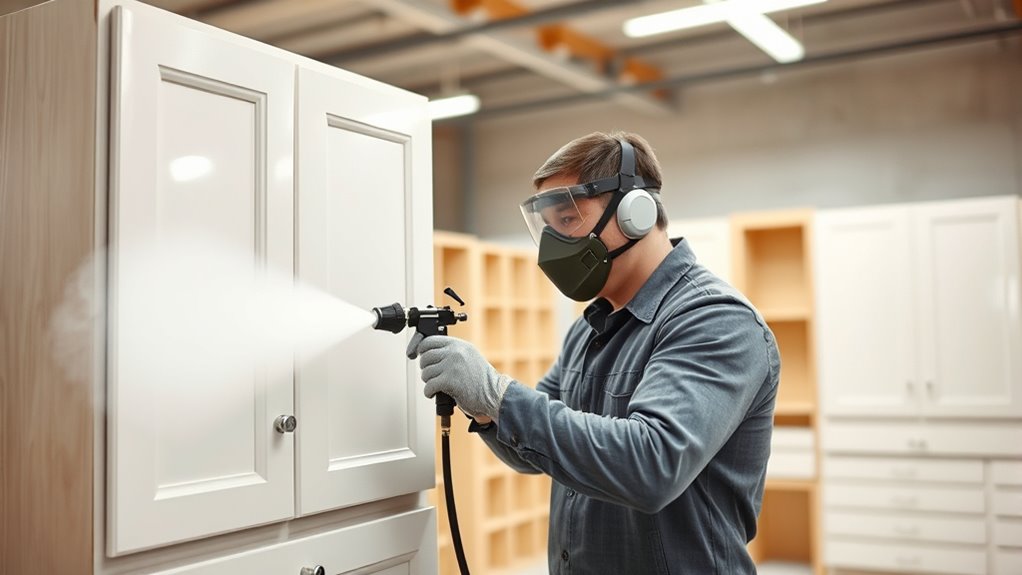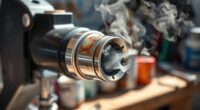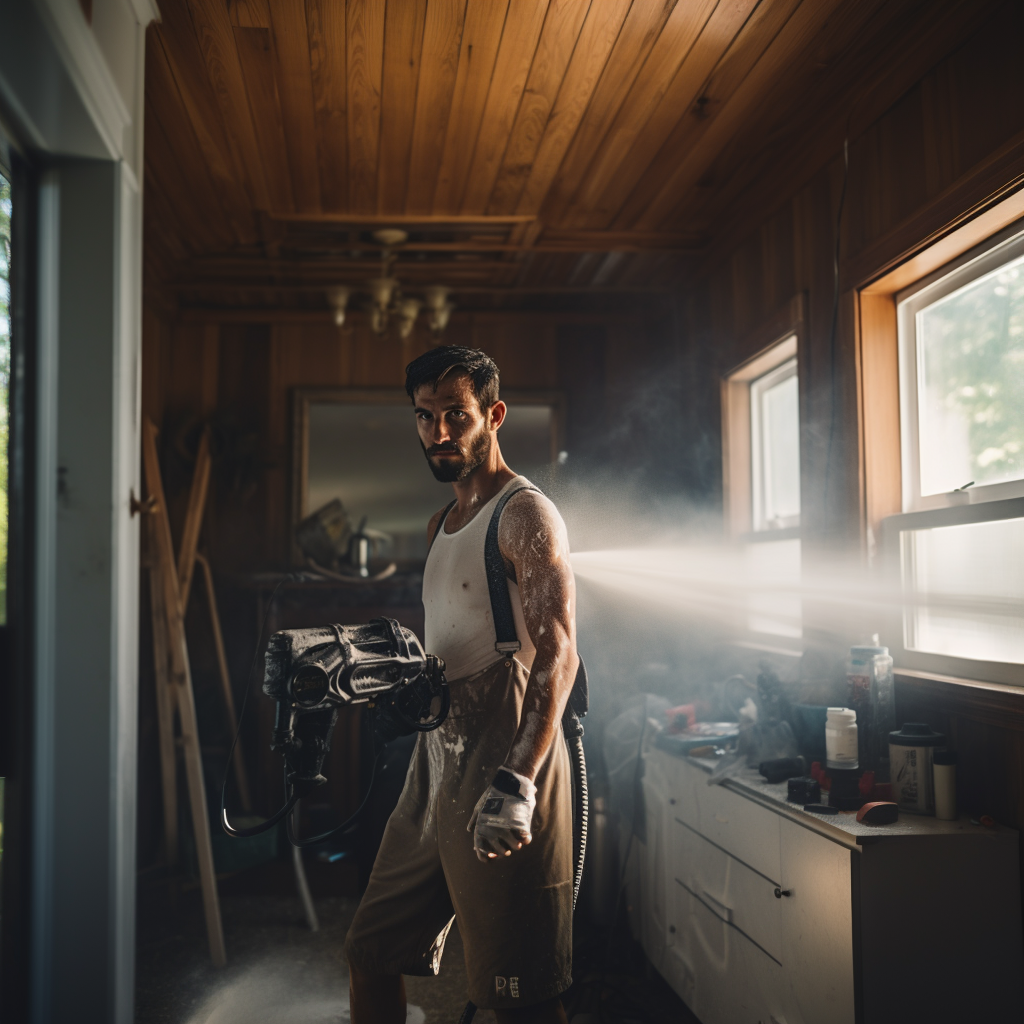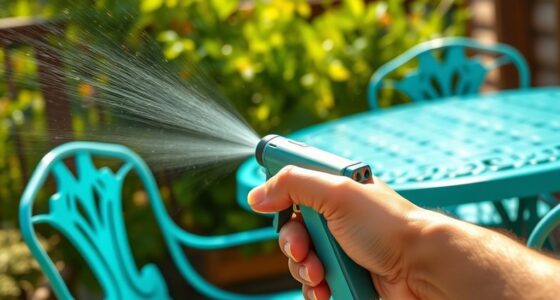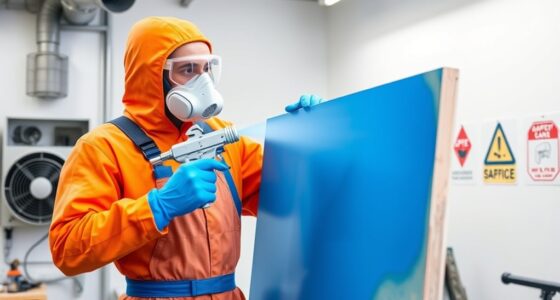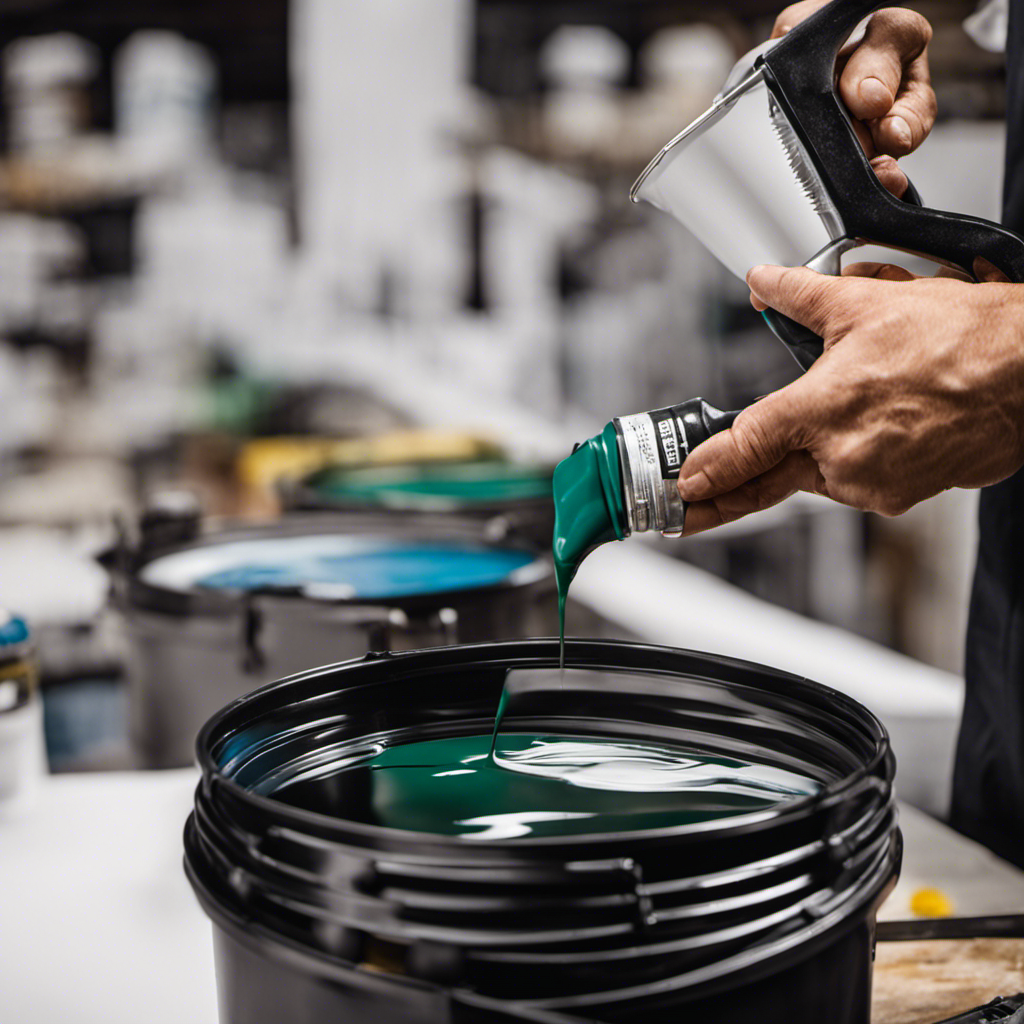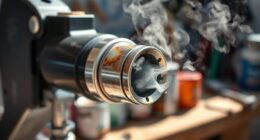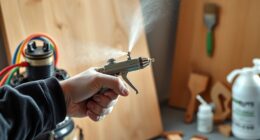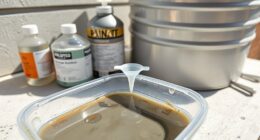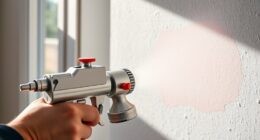To spray cabinets for a factory-smooth finish, start with thorough surface preparation and proper brushing to guarantee even layers. Use a clean spray gun with the right nozzle, keeping it at a consistent distance and overlapping passes evenly. Maintain steady movement and practice on scrap material to perfect your technique. Regularly clean your equipment and inspect each coat before applying the next. Continuing with these steps will help you achieve a flawless, professional look every time.
Key Takeaways
- Use proper spray gun settings and maintain consistent distance (6-12 inches) for even coverage.
- Practice on scrap material to perfect your technique and adjust flow and pattern accordingly.
- Keep a steady, overlapping motion with smooth, consistent passes to prevent streaks and missed spots.
- Regularly clean the spray gun components to ensure a smooth, clog-free spray pattern.
- Lightly sand between coats and inspect frequently to achieve a flawless, factory-smooth finish.
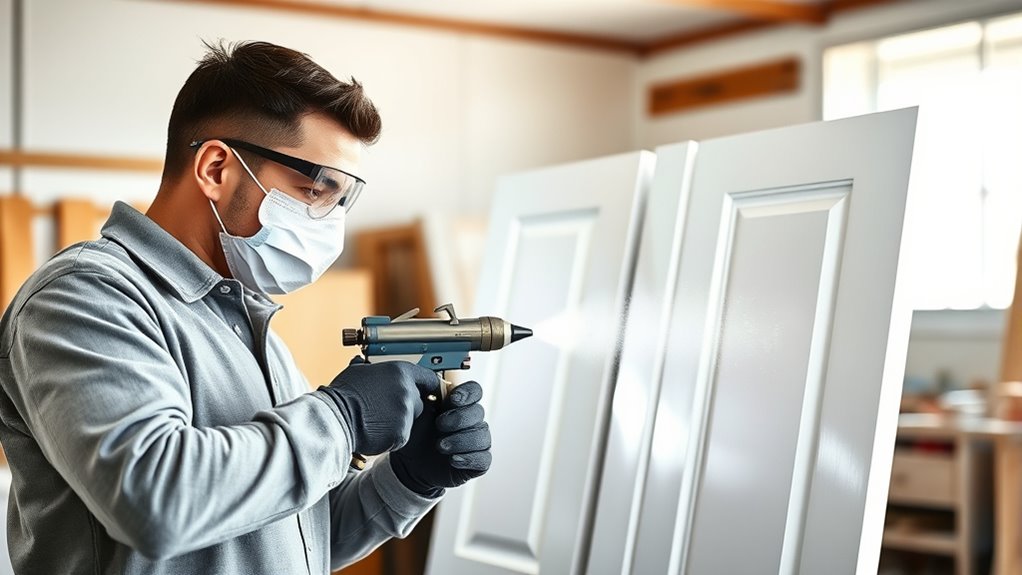
Achieving a perfectly smooth finish on cabinets requires careful preparation and the right spraying technique. To start, you need to understand the importance of proper brush techniques, even if you’re primarily using a spray gun. When working with brushes, use light, even strokes to avoid streaks and uneven layers. This skill translates well into spraying, helping you maintain control and consistency. Remember to keep your brush strokes gentle and consistent, especially when feathering edges or touching up areas. This attention to detail ensures a seamless transition between spray coats, resulting in a more professional look.
Proper brush techniques ensure smooth, even finishes and seamless spray coat transitions.
As you move to the spraying process, maintaining your spray gun becomes essential. Regular spray gun maintenance prevents clogs, uneven spray patterns, and other issues that can mar your finish. Before starting, thoroughly clean all components—nozzles, filters, and hoses—to remove any residual paint or debris. Proper cleaning not only prolongs your equipment’s lifespan but also guarantees a smooth, even spray. Always check for proper nozzle size and spray pattern adjustments, matching them to the type of paint or finish you’re applying. An improperly maintained or adjusted spray gun can cause runs, drips, or uneven coverage, which defeats the purpose of a flawless finish.
When applying the paint, keep the spray gun at a consistent distance from the surface, typically around 6-12 inches, depending on the equipment and paint thickness. Move smoothly and steadily, overlapping each pass by about 50%, to prevent streaks or missed spots. Use a side-to-side motion, maintaining a steady speed—moving too fast can result in thin, uneven coats, while moving too slow may cause drips. Practice on scrap material first to get a feel for your spray gun’s flow and pattern, ensuring you’re comfortable before tackling your cabinets.
Throughout the process, check your spray pattern regularly and make adjustments as needed. Frequent cleaning of the nozzle during long spraying sessions helps prevent buildup that can disrupt the spray consistency. After each coat, inspect your work carefully. Sand lightly between coats if needed—using a fine-grit paper—to smooth out any imperfections before applying the next layer. This step is essential for achieving that factory-smooth finish. Additionally, understanding the importance of proper equipment maintenance can significantly influence the final outcome.
Frequently Asked Questions
What Type of Spray Gun Is Best for Cabinet Finishing?
You should choose a high-quality HVLP spray gun for cabinet finishing, as it offers excellent control and minimal overspray. Consider models with adjustable settings for better precision. Look for spray gun types that work well with your air filter systems to guarantee a clean, smooth finish. An HVLP gun paired with a good air filtration system helps you achieve a factory-smooth look while reducing paint waste and fumes.
How Do I Prevent Drips and Runs During Spraying?
Think of spraying like painting a delicate dance; you want smooth, flowing moves. To prevent drips and runs, use even, light coats and maintain consistent gun distance. Focus on drip prevention by avoiding over-application, and practice run control to keep your spray steady. Keep your hand steady, and don’t rush the process—patience guarantees a flawless, factory-smooth finish without unwanted drips or runs.
What’s the Ideal Drying Time Between Coats?
You should wait about 2 to 4 hours between coating layers, depending on your paint or finish type. Check the manufacturer’s drying times on the product label, as they vary. It’s vital to confirm each coat is dry to the touch before applying the next to avoid uneven finishes or drips. Patience with drying times helps achieve a smooth, professional-looking, factory-smooth finish on your cabinets.
How Do I Achieve an Even Coat on Detailed Cabinet Edges?
Achieving an even coat on detailed cabinet edges requires precision and patience. Use careful brush techniques, applying thin, consistent layers to prevent drips and brush marks. Start by masking edges to protect surrounding surfaces, then work slowly along intricate details. Keep your brush slightly damp and use light, overlapping strokes. This approach guarantees smooth, uniform coverage, blending seamlessly into the flat surfaces, and results in a professional, factory-smooth finish.
Can I Spray Cabinets Outdoors Safely?
Yes, you can spray cabinets outdoors, but you must prioritize outdoor ventilation and weather considerations. Choose a dry, calm day to avoid dust, debris, or sudden wind that can ruin your finish. Guarantee proper outdoor ventilation by setting up a tent or canopy with sides open for airflow. Keep an eye on weather conditions, avoiding rain or extreme humidity, which can compromise the paint’s adhesion and drying process.
Conclusion
Now that you know the secrets to spraying cabinets for a factory-smooth finish, you’re ready to transform your space. Think of your brush as a magic wand, turning dull surfaces into gleaming works of art. With patience and practice, your cabinets will gleam like mirrors, inviting admiration from all who see them. So, pick up your sprayer and let your craftsmanship paint a story of beauty and perfection—the kind that makes every kitchen feel brand new.
Franz came aboard the Paint Sprayer Zone team with a background in both journalism and home renovation. His articulate writing style, combined with a passion for DIY projects, makes him an invaluable asset. Franz has a knack for breaking down technical jargon into easy-to-understand content, ensuring that even the most novice of readers can grasp the complexities of paint sprayers.
